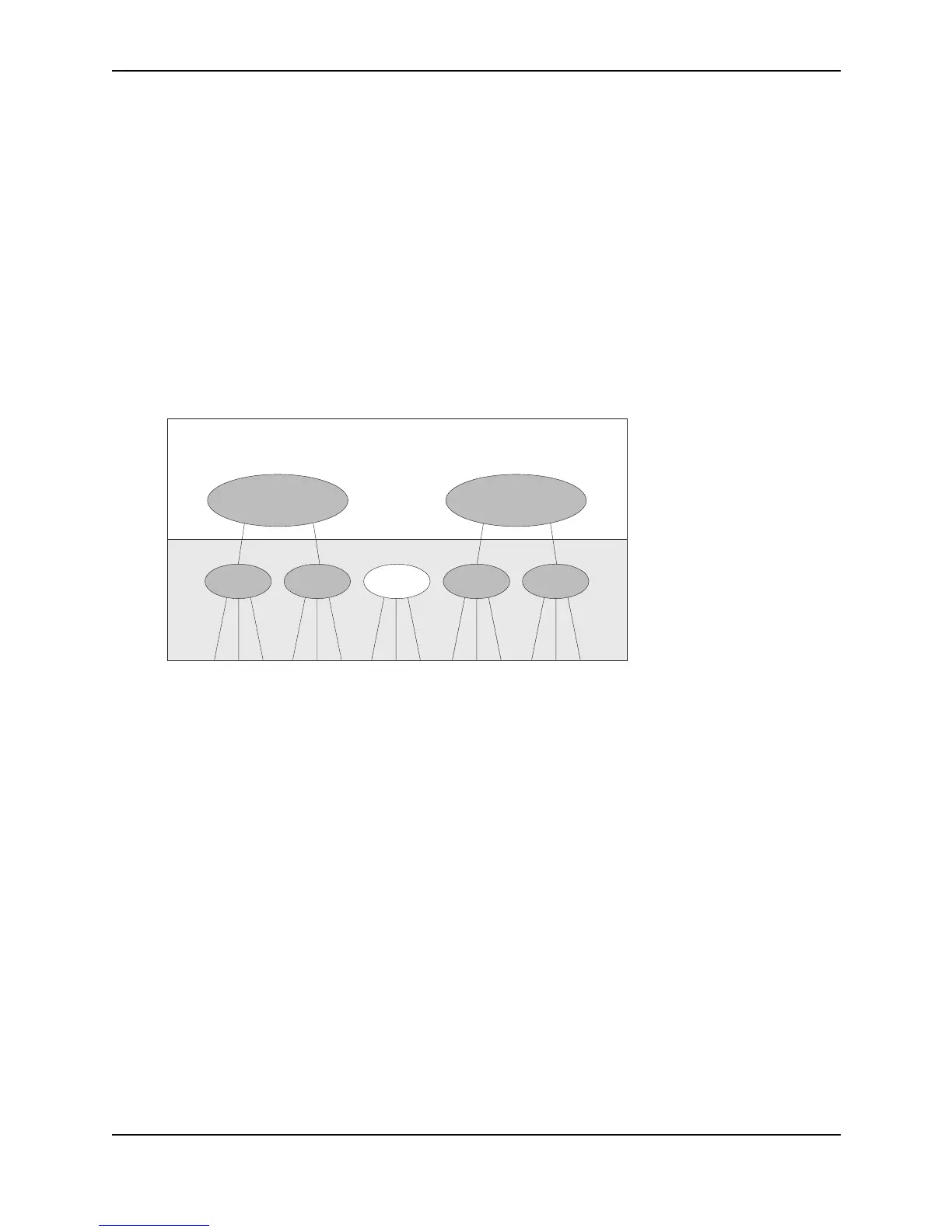Software Overview
December 2000 8 - 21
Multiple IP Sub-nets per Interface
Up to 64 IP sub-nets can be defined per port. IP/RIP and OSPF can be assigned to these multi-homed interfaces.
Multiple IPX Frame Type Support per Interface
Up to four different IPX network numbers and frame encapsulation types can be defined for each IPX interface.
You can define and receive traffic from four separate IPX networks on a single interface. Each of the networks
must have a distinct network number and one of the following encapsulation types: Ethernet SNAP, Ethernet
802.2, Ethernet 802.3, and Ethernet II.
Multi-Port Subnets (Integrated Switch-Routing)
Integrated Switch Routing (ISR) allows a Foundry router to assign and support VLANs on its interfaces as would a
Layer 2 Switch. In addition, this feature provides routing between its VLANs. This combined logical switch and
router operation within a single device is what defines a router as an Integrated Switch-Router, as shown in Figure
8.4.
Figure 8.4 Logical representation of ISR within Foundry routers
Routing between the VLANs is performed without dedicating physical ports by using virtual interfaces. These
virtual interfaces serve as a link between the configured VLANs and the routing core of the Foundry routers.
The ISR architecture provides the platform for support of policy-based VLANs within Foundry routers.
Static IP Routes, Address Resolution Protocol (ARP) Entries, and Reverse ARP
(RARP) Entries
Foundry routers can learn and cache IP routes, ARP entries, and RARP entries. In addition, you can add static
entries for these items.
For more details on configuring static routes, ARP, or RARP entries, see “Configuring Static Routes” on page 15-
39 and “Creating Static ARP Entries” on page 15-32.
IP/RIP Routing
IP is the most widely used networking protocol on the Internet and in enterprise LANs. The Foundry
implementation of IP adheres to the IP-related RFCs listed in “Software Specifications” on page E-1. In addition,
features such as multi-netting, integrated switch-routing, and VLANs (described in the sections above) enhance
the IP support.
Foundry routers support the following intra-domain routing protocols:
• RIP
• OSPF
IP Route
Forwarding
IPX Route
Forwarding
IP sub-net
A
IP sub-net
B
Appletalk IPX Network
1
IPX Network
2
Layer 3 Switch
Layer 2 Switch
